|
THE WEB FRESHFORD SITE |
Click on images or Charmouth Home to return back.
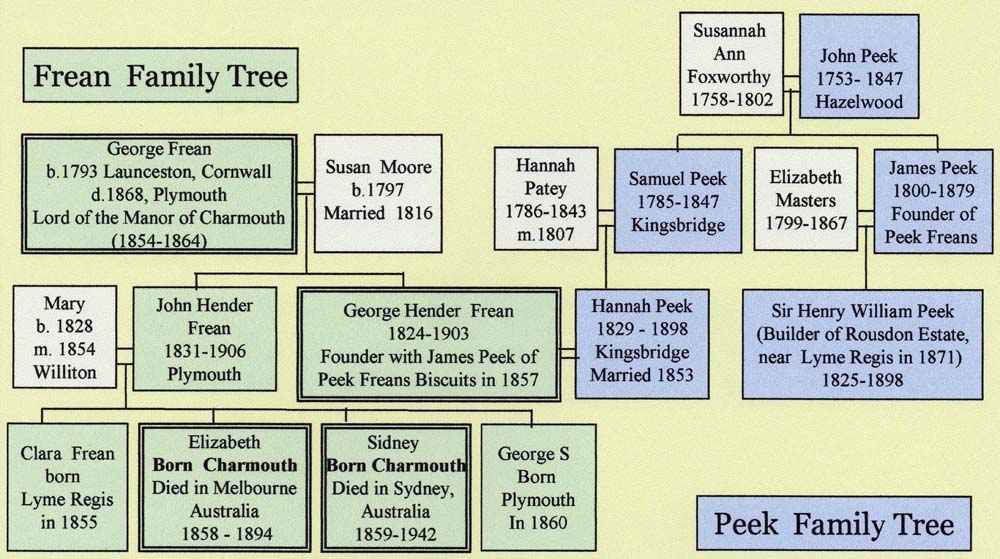
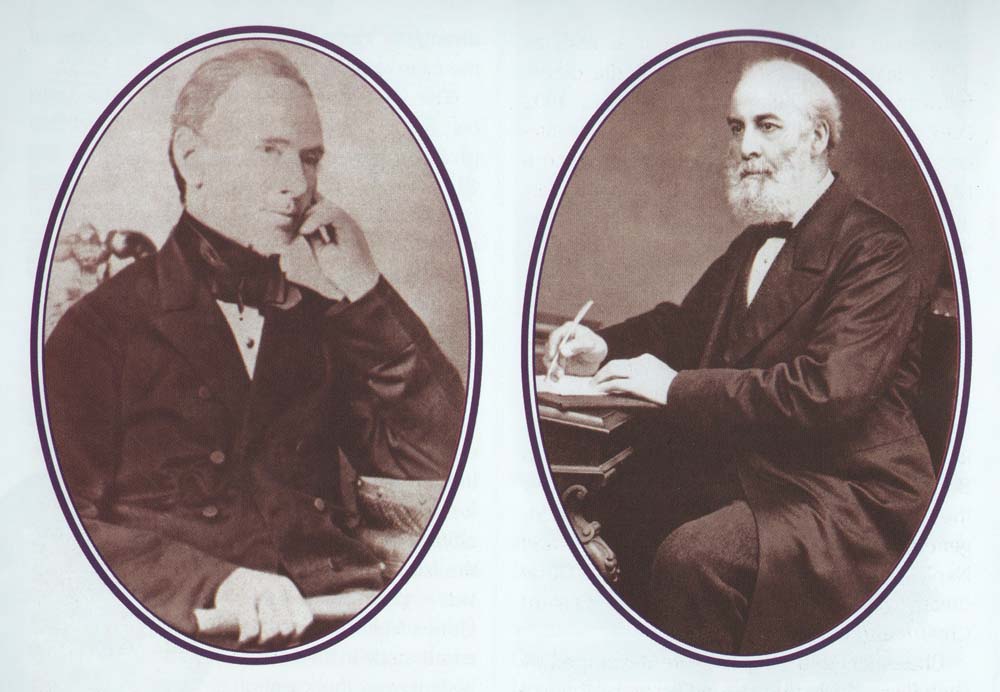
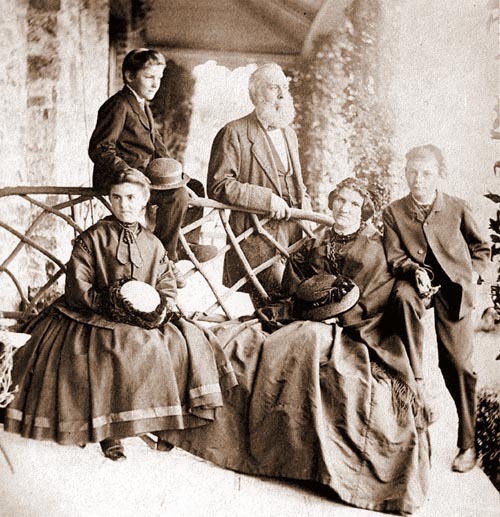

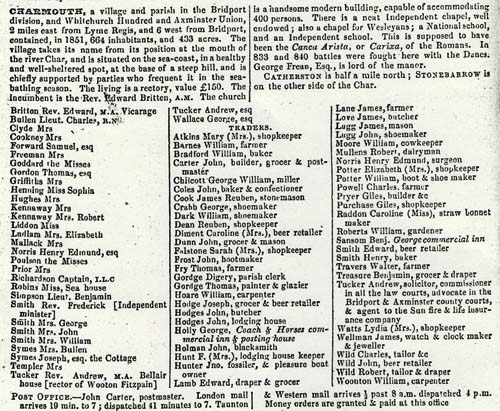
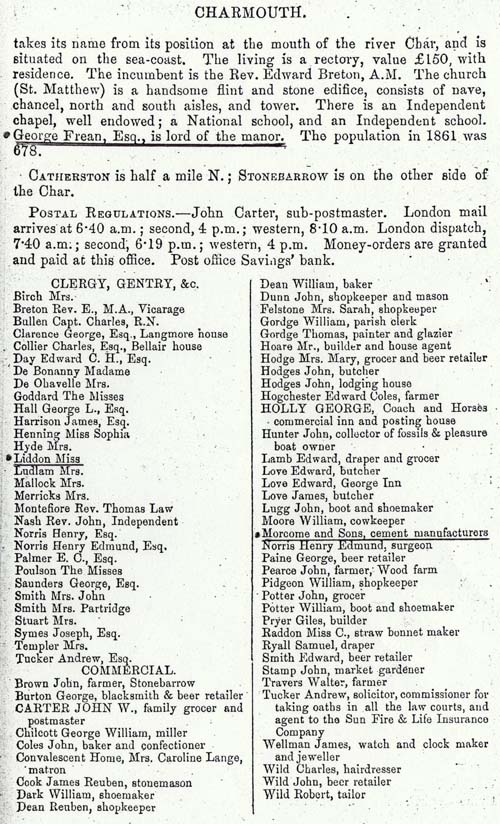
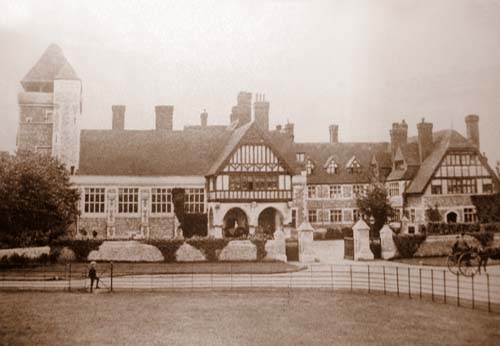
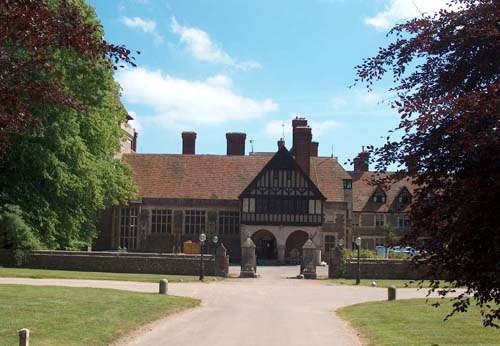
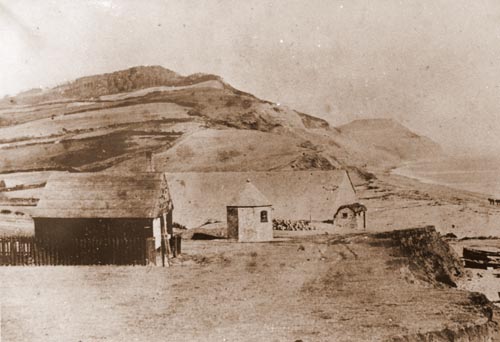
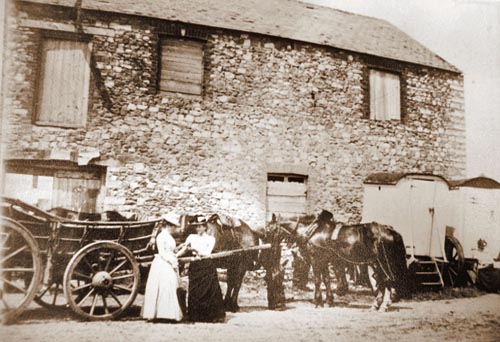
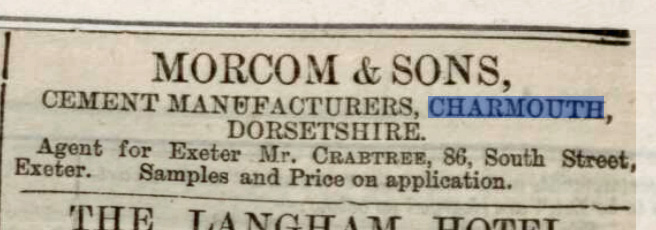
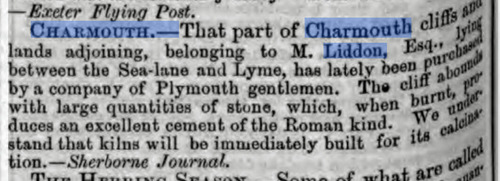
The Liddons finally decide to sell The Manor of Charmouth with Langmoor House which together with meadows is almost 100 acres, by Auction at the Auction Mart, Bartholomew lane in London on Thursday 18th August 1853.It is then bought by George Frean, aged 61 and his son George Henderson Frean, who originate from Plymouth for £6500. The family have prospered and George senior is shown as Mayor of the town at one time. They are described as corn merchants and operate a number of mills in the Plymouth neighbourhood and are shown living by Drakes Place Mill in the town. In 1844 George had formed the Plymouth and Dartmoor Gunpowder Company near Postbridge, Dartmoor. Its Production started in 1844 after he had spent £12000 on the venture. The gunpowder was in great demand for both quarrying and for farmers clearing rock from their land. Over a hundred people were employed and it prospered until the invention of dynamite in 1867 when demand fell dramatically. George Frean retired in 1885 after selling this business.
It is difficult to reason why he was to pay such a large sum for the Charmouth Manor Estate, but in the end it proved a good investment. Before the year was out he was to sell off Langmoor Manor from it to Ann Farwell Moly for £3400 and a parcel of fields to John Wilcocks for £2000. His name rarely appears in the records of Charmouth, for at this time the Censuses show him living in Drakes Place in Plymouth with his family. But one interesting piece of information is a 1861 Census showing that his son John Fender Frean between 1856 and 1858 had 3 children one being born in Lyme Regis and the other two in Charmouth.But by the 1861Census he has returned back to Plymouth. He no doubt lived in one of his fathers houses in the village, but it is difficult to pinpoint precisely which one for this short period. Harrods Directory for1855 describes George Frean as the Lord of the Manor and the main land owner. There is another reference to George being paid a rent of £3 a year by the Excise men who occupied the cliff slope immediately west of the Cement Factory. Here they had built the little octagonal lookout, which still stands on the Manor land. The deeds for the Manor of Charmouth show that he borrowed heavily against it's value and by 1863 owed £3750. When it was eventually sold,his son George Hender Frean is shown as benefiting from the sale and it no doubt helped with the finance of his other business. For his claim to fame is that he was one of the co-founder of the world famous biscuit firm - Peek Freans.
It is worthwhile studying the connections with the firm as there is a direct link in the neighbourhood with the other part of the name -Peek. For in 1871 Sir Henry Peek, M.P. For Mid Surrey established his Estate at Rousdon, near Lyme Regis. His father was James Peek who had run a successful Tea Importers in London and in 1857 wished to diversify after his sons refused to join the family business. He decided to set up a new business and contacted George Hender Frean, a miller and ships biscuit maker who had married Hannah Peek, one of his nieces. Peek wrote to him explaining he would set up a biscuit factory for his sons if Frean would manager and partner, he accepted. Sadly it did not work out for the sons , but Peek Freans was to prosper under George Frean. He went on to contact an old school friend, John Carr who had a background in biscuit manufacture and was to develop the famous Pearl biscuit, which was the pioneer of the biscuit we know today. In 1866 they had outgrown their former premises and built a huge factory in Bermondsey which continued to be a major employer in the area until it closed down in 1989. Celebrated lines invented by Peek Freans were: Garibaldi(1861) ,Maria (1875),golden puff,(1909),bourbon(1910).shortcake(1912),cheeselets and Twiglets.
I have pondered over why George Frean attended the Auction in London when the Charmouth Estate came up in 1853. His background shows him as a successful entrepreneur willing to create a business from nothing as he no doubt was able to do with the gunpowder factory he set up on Dartmoor. He obviously was not that interested in Langmoor Manor as a house to live in, as he was soon to sell that it off and then went on to sell part of the farm very quickly to raise money. He used what remained as an asset to borrow against. His main focus must have been the setting up of a Cement Works near the existing Lime Kilns by the mouth of the River Char and the sea. His sister, Anna Frean had married Michael Morcom, described as a merchant at Plymouth in 1836. They were to have ten children. One of whom - George Frean Morcom was to later reside in Los Angles and become world famous as an Ornithologist. But in 1851, the family are living at St Agnes in Cornwall and Michael is described as a Mine Agent. No doubt with a background in quarrying the Morcoms would be ideal for running a Cement Factory for George. By January 7 th , 1863 the building we see today had been finished by the local builders, Pryers and a later auction catalogue reveals that Mr. Morcom of Plymouth had a 21 year lease and was paying £100 a year rent for a Cement Mill, a Stone and Slated Building, with two floors, lean to, and two kilns. On top of the rent there were royalties of 1s 6d per ton on Cement,1s per ton on unmanufactured Stone,1s per ton on Manganese, and 2s per 1000 on all Bricks,Tiles and other like articles manufactured by the Lessee. But sadly the business never took off and may well have contributed to George Freans decision to sell his Estate to John Hawkshaw on January 1 1864 for £6000. This was precisely 10 years from the day he had bought his property in Charmouth from the Liddons. So ended an interesting chapter in Charmouth`s history which few people would be aware of . It does explain why the Cement Works came to be built. In its day, a white elephant due to its size, but now an important resource for the promotion of the Town
